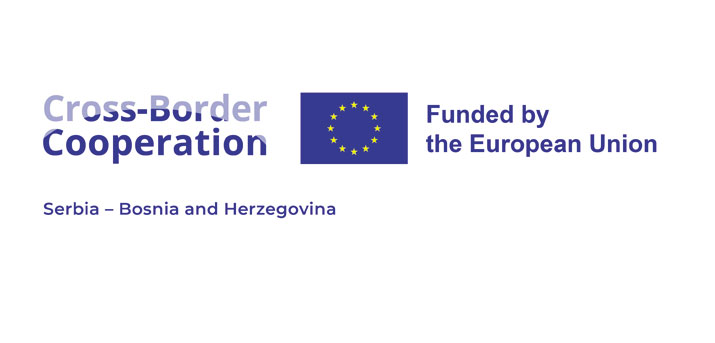Intending to assess (dis)satisfaction of young people in Serbia with the way of implementing of youth policies at the local level, Centre for Equitable Regional Development (CenTriR) has conducted a survey among 544 high school students from Sremska Mitrovica, Stara Pazova, Ruma, Prijepolje, Nova Varoš, Užice and Čajetina. Results of this survey revealed a level of social engagement of young people in Serbia, their awareness of social topics and events, the most important problems their facing with, as well as the level of their satisfaction with the work of local Youth Offices, established to meet the needs and interests of young people.
The survey has showed that the high school students in Serbia do not recognize enough importance of their engagement in work of local organisations which cope with youth affairs. Only 17% of respondents have confirmed their involvement in at least one form of formal youth organisation. Among these forms, participation in students’ parliaments, as a mode of school organisation which exists in Serbia since 2003, prevails, followed by the involvement in local organisation of Red Cross, and local Youth Offices.
Majority of high school students in Serbia follow the entertaining (34.3%) and sport contents (25.6%), mainly on television or on the Internet, through which they usually get informed about the social events and changes. Only 15% of high school students often follow the contents addressing young people, while the least of their interest is attracted by cultural and info-political contents (8.7%).
As the major problem they are facing with, the surveyed high school students pointed out the unemployment rate, which means that young people quite objectively assess this problem since the last surveys reveal that one out two young persons in Serbia is unemployed, which is far more than the European average. The respondents noted the poverty of young people as the second major problem they are facing with, which is an “other side” of the problem of unemployment, while the poor education system is spotted as the third major problem.
Half of the respondents believe that the authorities and policy makers at the national and local level do not encourage young people to actively participate in social events at all. On the other hand, 22% of students believe that the public authorities encourage young people or that these incentives are satisfactory, while a large number of them (29%) did not know the answer to this question. This means that many young people do not know what are the processes of decision-making in which young people should be involved and whether the national and local authorities are taking appropriate measures and activities in this sense.
The survey reveals that the local Youth Offices are to some extent recognized as promoters and advocates of youth policies and activities. Majority of respondents mentioned local Youth Offices as local bodies which predominantly strive to improve youth status in a society. On the second place, the respondents pointed out schools, while they identified local organisations of political parties as the least effective bodies in representation of the interests of young people. It is interesting to draw a parallel with the results of the survey conducted on the territory of Bosnia and Herzegovina, which shows that that the high school students in this country have the least amount of confidence in local Youth Commissions and local branches of political parties when it comes to protection of their interests, and that they have the most confidence in schools, as institutions which predominantly work to improve the position of young people in a society.
Nevertheless, only 16% of high school students in Serbia know about an activity of local Youth Offices, while only 11% of them had participated in an initiative or activity of these offices. These numbers are relatively low and show that high school students are not familiar with and involved enough in the work of Youth Offices, which is confirmed by the results of the analysis on the functioning of these offices in Serbia, as the number of users of their services on a monthly basis, and the number of active volunteers in most municipalities are very small compared to the entire population of young people.
However what should be worried about is the fact that only 13% of young people think that the position of young people in Serbia over the next 10 years will be significantly better, while one-third believe that the situation will be the same (36%) or even worse than now (32 %). These findings should concern all decision makers in the field of youth policies because this pessimism usually results in apathy and lethargy of young people, unwilling to undertake any measure and engage in youth activism seeking to improve the status quo.
This analysis is a part of the wider survey conducted on the project “Young-the most important driving engine of our region”, which seeks to reveal the real situation regarding the implementation of youth policies in the cross-border local communities in Serbia and Bosnia. The project is funded by the European Union, through the IPA Cross-Border Program Serbia – Bosnia and Herzegovina, and implemented jointly by two civil society organizations – Center for Equitable Regional Development – CenTriR (Belgrade) and the Helsinki Committee for Human Rights in Republika Srpska (Bijeljina). The results of this larger survey, which focuses on cities and municipalities on both sides of the border, as well as the results of the analysis which applies only to cities and municipalities in Serbia, are available on the CenTriR website at the following addresses:
(larger survey),
Source: http://www.centrir.org/index.php?lang=1&news=109
……………………………………………………………………………………………………………………………………….
This Press Release is published by:
http://ww.novosti.co.rs/vesti/naslovna/drustvo/aktuelno.290.html:488398-Nezaposlenost-najveci-problem-mladih-u-Srbiji
http://www.e-novine.com/drustvo/102302-Mladi-nezaposleni-siromani.html
http://bktvnews.com/nezaposlenost-najveci-problem-mladih-u-srbiji/
http://www.novimagazin.rs/vesti/nezaposlenost-je-najveci-problem-mladih-u-srbiji
http://www.vesti.rs/Drustvo/Mladi-nezaposleni-i-siromasni-2.html
http://www.rtv.rs/sr_lat/drustvo/mladi-nezaposleni-i-siromasni_480238.html?utm_source=feedburner&utm_medium=feed&utm_campaign=Feed%3A+RtvSveVesti+%28RTV+poslednje+vesti%29
http://www.pressonline.rs/info/drustvo/308514/nezaposlenost-najveci-problem-mladih-u-srbiji.html
http://www.smedia.rs/Vesti/Vesti/vest/278668/nezaposlenost-najve-i-problem-mladih-u-srbiji.html
http://www.vvesnik.com/1/post/2014/04/nezaposlenost-najvei-problem-mladih-u-srbiji.html
http://vesti.somee.com/?sk=%2fwEFSDxzdj48ZiB2PSIzMjQ4MDAiIC8%2bPHIgcj0iMTIiIHQ9IjUwMCIgaT0iYyQ3JDEyJDEkY3RsMDEiIHBzPSIxNSIgLz48L3N2Pg%3d%3d
http://www.sirmiuminfo.rs/apps/siap.dll/prikazi_vest?VrstaVesti=1&VestId=7789
http://www.grad-ruma.net/vesti/82-srbija/8538-nezaposlenost-najveci-problem-mladih-u-srbiji





